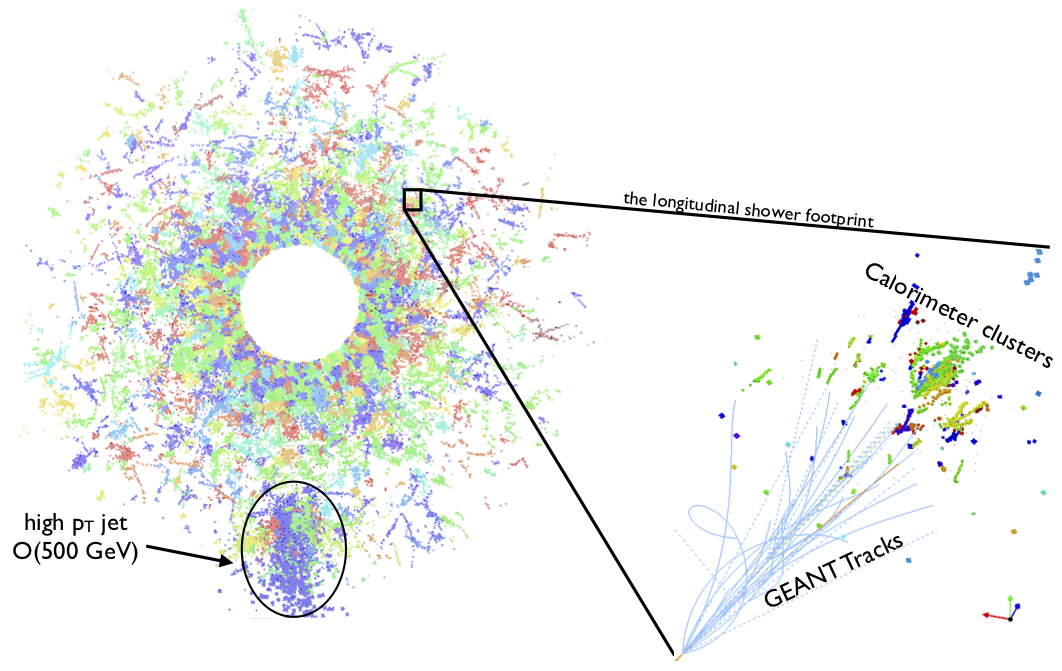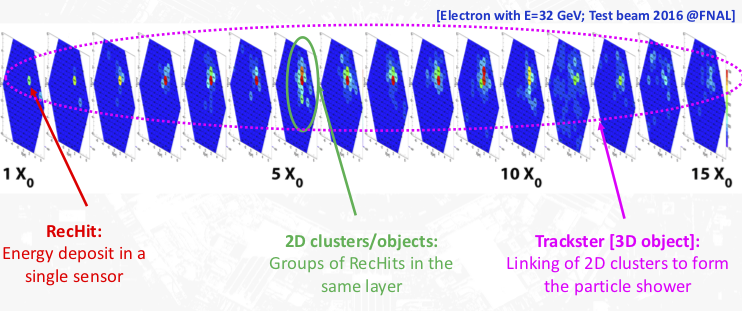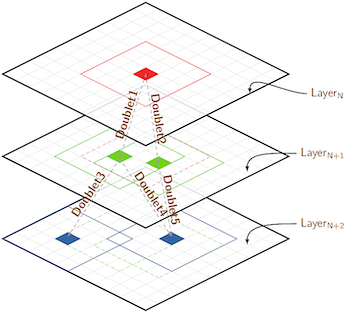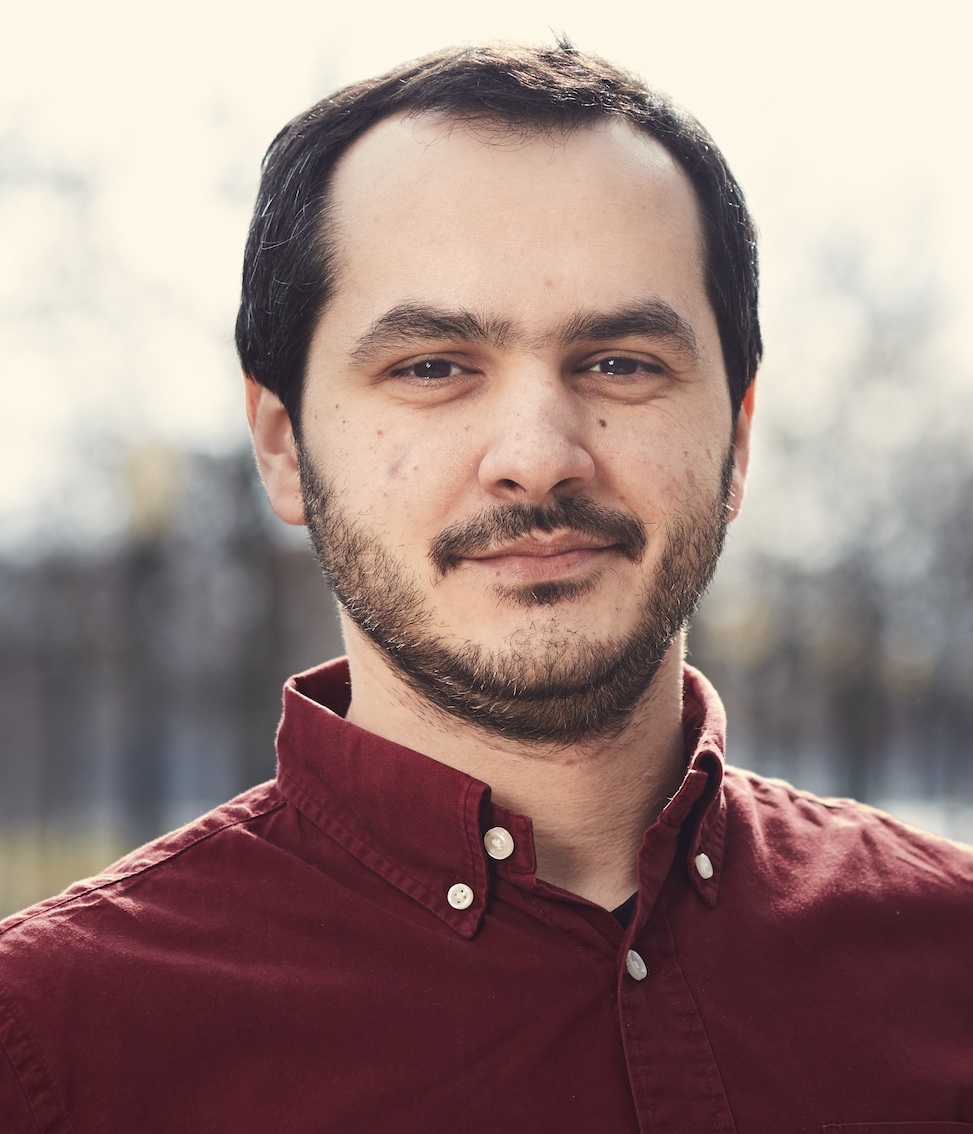The High Luminosity (HL) upgrade of the Large Hadron Collider (LHC) will collect 10x more integrated luminosity than the LHC, posing significant challenges for radiation tolerance on the detectors. Moreover, particle shower reconstruction will have to face harsher conditions due to, e.g., almost 7x more overlapping proton-proton collisions (pileup) than present. Both of these effects are particularly relevant for forward calorimetry.
As part of its HL-LHC upgrade program, the CMS collaboration is designing a novel High Granularity Calorimeter (HGCAL) to replace the existing endcap calorimeters. It features unprecedented transverse and longitudinal segmentation for both electromagnetic (ECAL) and hadronic (HCAL) compartments. This will facilitate event reconstruction inside the calorimeter volume, where the fine structure of showers can be measured and used to enhance pileup rejection and improve particle identification and separation, while still achieving excellent energy resolution. The intrinsic high-precision timing capabilities of the readout electronics will add an extra dimension to the event reconstruction: this could turn out to be an extremely powerful tool to achieve pileup rejection.
 Fig 1. Particle Reconstruction in HGCal
Fig 1. Particle Reconstruction in HGCal
The current HGCAL reconstruction produces hundreds of “Tracksters” per simulated proton-proton collision. The “Tracksters” are Direct Acyclic Graphs representing topologically connected layer clusters belonging to a single reconstructed physics object. However, in the presence of a large number of pileup collisions and in dense environments, the tracksters could be contaminated by unrelated layer clusters (from particles originating from pileup interactions and/or from other particles stemming from the main collision vertex).
 Fig 2. Particle shower depiction
Fig 2. Particle shower depiction
The objective of the project is to design and deploy advanced Neural Network architectures that can process the tracksters data (directed acyclic graphs) and produce a pruned graph that does not contain contamination of particles other than the particle initiating the main shower. The trackster data is well suited for a generative model based on graph neural networks.
 Fig 3. Building tracksters
Fig 3. Building tracksters
More info: HGCal reconstruction slides
Supervisor: Vlado Menkovski, (CERN Researchers): Loukas Gouskos, Felice Pantaleo, Huilin Qu, Marco Rovere
